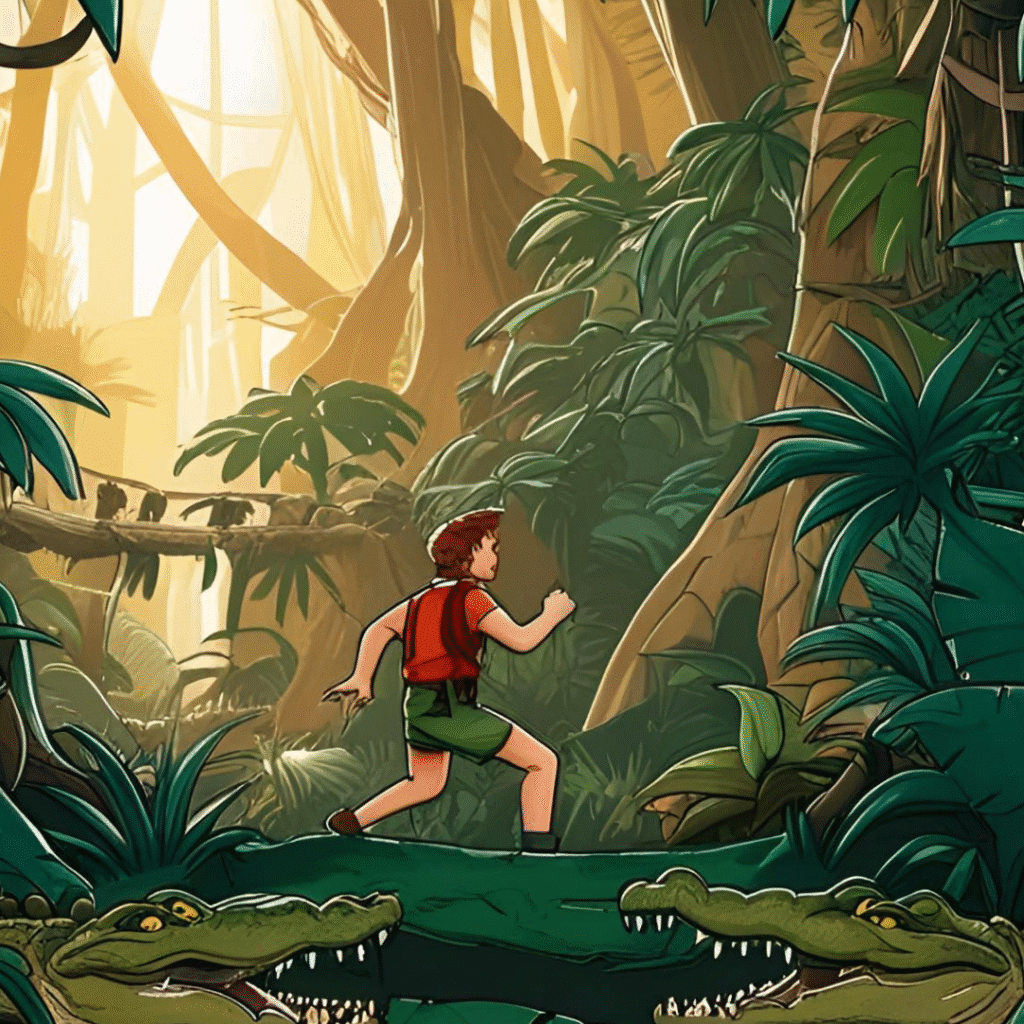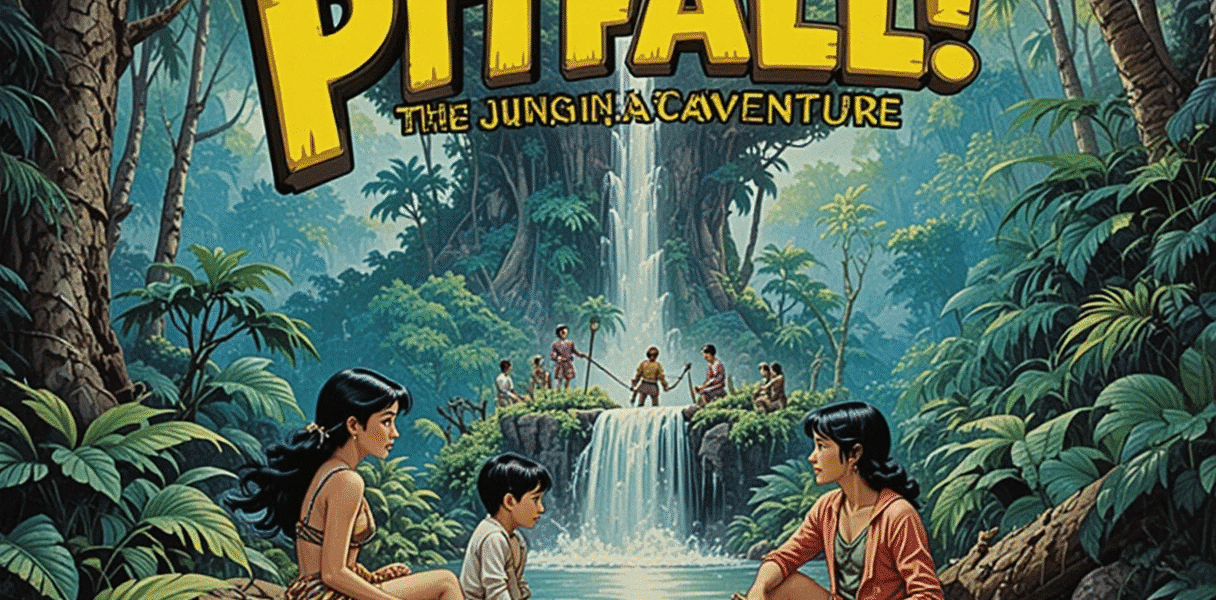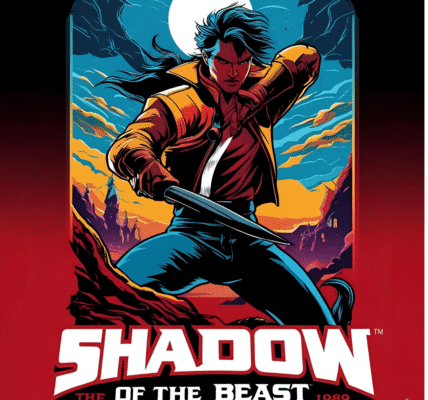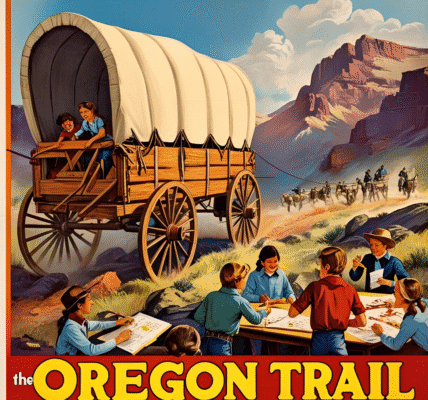Pitfall! (1982) – The Jungle Adventure That Defined a Generation

In the early 1980s, video games were still in their infancy. The graphics were simple, the sounds were beeps and boops, and gameplay was often limited to high-score chasing. Yet, in 1982, a little game came out for the Atari 2600 that changed everything — Pitfall! Developed by Activision and designed by the legendary David Crane, Pitfall! wasn’t just another platformer. It was a bold leap into what video games could become: immersive, challenging, and unforgettable.
The Birth of Pitfall!
At the time, most Atari 2600 games were repetitive and arcade-style — like shooting at things or dodging obstacles in a single screen. But David Crane had a different vision. He wanted to create a game where players could go on an actual adventure. Something with an environment, goals, and a character with purpose.
That character became Pitfall Harry, a daring explorer wearing a white shirt, brown pants, and always running — jumping over crocodiles, swinging on vines, and dodging scorpions in a pixelated jungle. Inspired by classic adventure stories and films like Indiana Jones, Crane used clever programming to make a game that had a sense of continuity and exploration, despite the limitations of the hardware.
Gameplay That Stood Out
Pitfall! wasn’t like other games of its time. Instead of just one or two levels, it offered players a world of 255 interconnected screens — an enormous number for 1982. Players had exactly 20 minutes to navigate the jungle and collect as many treasures as possible. Gold bars, silver bars, diamond rings, and money bags were scattered across the jungle, some in plain sight, others behind clever platforming challenges.
You had to jump over rolling logs, time your vine swings perfectly, and decide when to take the underground tunnels or stay on the surface. One wrong step and you’d fall into a tar pit or get bitten by a snake. The goal? Survive the jungle, avoid obstacles, and grab those treasures.
What made it revolutionary was that it didn’t rely on shooting or simple scoring. It was about timing, memory, exploration, and survival. Players had to learn the layout of the jungle and think ahead.
Technical Brilliance on Limited Hardware
It’s easy to forget just how primitive the Atari 2600 was. It had very little memory, only a handful of sprites, and limited color capabilities. But David Crane worked miracles. He created a system that made each screen feel like a part of a bigger world. Even though each area looked similar, small changes in terrain and enemy placement gave the illusion of a massive jungle.
Crane also programmed a clever algorithm that allowed the game to generate 255 screens without actually storing them all in memory — a brilliant trick that made Pitfall! feel bigger than it really was.
Cultural Impact and Commercial Success
Pitfall! wasn’t just a technical feat — it was a massive hit. It sold over 4 million copies, making it one of the best-selling Atari 2600 games of all time. Kids who grew up in the early ‘80s often name Pitfall! as one of their favorite childhood games.
The game became so popular that Pitfall Harry turned into one of the first video game “mascots.” He appeared in TV commercials, comic book ads, and even a Saturday morning cartoon segment in the Saturday Supercade animated series.
Pitfall! helped put Activision on the map as a major video game publisher. Remember, back then, most Atari games were made by Atari themselves. Activision, founded by former Atari programmers like Crane, was one of the first third-party game developers — and Pitfall! was their crown jewel.
The Legacy of Pitfall!
Though Pitfall! might look basic today, its DNA runs through countless games that came after. Games like Super Mario Bros., Donkey Kong Country, Tomb Raider, and Uncharted all owe something to Pitfall!’s adventurous spirit.
The idea of exploring a world, collecting treasures, avoiding traps, and relying on precise jumping and timing — these were all part of Pitfall!’s foundation. It was among the first games to suggest that video games could tell a story through gameplay, not just through scoreboards.
Pitfall! also showed that players wanted more than just to shoot things or get high scores — they wanted to explore, solve problems, and go on a journey.
Sequels and Remakes
Given its success, Pitfall! naturally spawned a few sequels and remakes over the years. Here are a few notable ones:
- Pitfall II: Lost Caverns (1984) – An immediate follow-up that added more advanced features like music, checkpoints, and even vertical scrolling.
- Super Pitfall (1986) – A NES version that received mixed reviews due to poor controls but attempted to expand on the original idea.
- Pitfall: The Mayan Adventure (1994) – A modern reimagining for the Sega Genesis and Super Nintendo, featuring Harry’s son as the new protagonist.
- Pitfall 3D: Beyond the Jungle (1998) – A 3D version for the PlayStation era, bringing the franchise into the modern graphics era.
- Mobile and Digital Ports – Over the years, Pitfall! has been ported to smartphones, included in retro collections, and even made available on modern consoles in downloadable form.
Why It Still Matters
So why does Pitfall! still matter in 2025?
Because it represents the roots of adventure gaming. It’s a reminder that even with the most limited technology, imagination and clever design can create magic. Pitfall! didn’t need lifelike graphics or epic cutscenes. It needed just one thing: a compelling reason to keep playing. That reason was the thrill of discovery — something that never gets old.
For many players, it was the first time a game felt like an actual journey. And for game designers, it was proof that clever ideas could outshine hardware limitations.
Conclusion
Pitfall! may look like a relic from a bygone era, but it’s far more than that. It’s a pioneer — a game that dared to go beyond the high-score chasing of the time and deliver a full-fledged adventure, one pixel at a time. For those who played it in the early ‘80s, it wasn’t just a game. It was a jungle expedition, a race against time, a test of skill and memory. And even today, it stands as a monument to creativity, innovation, and the sheer joy of exploration.
Whether you’re a retro gaming fan or someone curious about where video games began, Pitfall! deserves a place in your memory. It’s not just a classic — it’s a legend.




